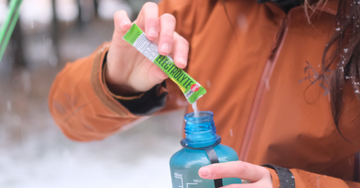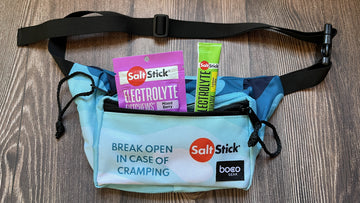
This article was originally published in March 2015. It was updated in June 2022.
Open any endurance sports magazine, and you’ll see advertisements for products claiming to make you faster, stronger or have better endurance. It can be enticing, but when reading these assertions, it is important to examine the science behind them. Here at SaltStick, we deliver the facts behind our claims.
So when we say that SaltStick can help increase performance, we can back it up with a study from Spain, which found that salt supplementation via SaltStick Caps improved triathletes’ medium-distance race times by an average of 26 minutes! What is particularly compelling about these results is that many of these athletes were already consuming sports drinks, but it was the addition of the SaltStick Caps to their nutrition routine that made the difference in their performance.
As any triathlete worth their salt (pun intended!) knows, 26 minutes in a race is a sizable increase in speed, so if you are struggling to break a certain barrier in your endurance races, perhaps electrolyte supplementation is your answer. Read on for the particulars of this study, and note that SaltStick did not have any connection to the study in the form of counseling researchers, sponsoring or funding the study, or providing the product used in the study.
Why Electrolytes Matter
The human hydration process operates on salt to water ratios. A proper balance of electrolytes supports blood pressure, muscle contraction and, of course, sweat, which helps lower your body temperature. When you sweat, you lose water and electrolytes, and you need to consume both to rehydrate effectively.
It’s time to get a little technical, but bear with us. Most people’s sweat contains sodium at a concentration of 40-60 mEq/L, and to stay hydrated, you should replace the lost salt and water with a similar concentration. However, many sports drinks are only concentrated at a 20 mEq/L level because increasing sodium beyond this level usually results in an unpleasant taste, like sea water. Supplementing with a low-concentration sports drink would therefore only replenish about half of the necessary electrolytes, relative to the water content.
Knowing this, researchers at Camilo José Cela University (UCJC) wanted to find out if increasing the salt concentration to better align with that of sweat could boost endurance performance in athletes.
High-Salt Group vs Low-Salt Group
To test the theory that increased salt supplementation could boost endurance performance, researchers at UCJC divided medium-distance triathletes into two groups. Twenty-six experienced triathletes were matched for age, anthropometric data, and training status, and were randomly placed into the salt group or the control group.
The first group completed a medium-distance triathlon (the distances totaled to approximately a 2K swim, 90K bike and 21K run), and consumed sports drinks as they usually would, but also consumed SaltStick Caps. The total amount of electrolytes provided in the salt group was 2580 mg of sodium (113 mmol), 3979 mg of chloride (112 mmol), 756 mg of potassium (19.3 mmol), and 132 mg of magnesium (5.4 mmol). This amount of salt was calculated to replace approximately 50% of the sodium lost in sweating by an average participant with a sweat sodium concentration of 40 mM, a sweat rate of 1.0 Liter per hour and a race time of 325 min.
The Findings: Electrolytes Can Help Sustain Performance
When the triathletes completed the race, researchers tallied up finishing times and found that the triathletes who consumed SaltStick Caps finished an average of 26 minutes faster than the control group without the added sodium! The improvement in race times came mostly from higher speeds in the cycling and running legs (which come later in triathlons as electrolyte levels begin to decline).
Another observation by researchers was that body mass tended to be less reduced in the salt group than in the control group, while post-race serum sodium and chloride concentrations were higher in the salt group than in the control group. In other words, oral salt supplementation was effective to statistically lessen body mass loss and increase serum electrolyte concentration. Researchers concluded that the sodium supplementation helped to maintain optimal electrolyte levels and stimulated thirst, which made the athletes instinctively drink more water. This made it easier for them to stay hydrated and keep their strength throughout the race.
How to Use SaltStick:
The researchers at UCJC focused their study on the effects of sodium, but your sweat contains several other electrolytes which are just as important for performance. Each SaltStick Capsule contains all four essential electrolytes (sodium, potassium, calcium and magnesium), in a similar concentration to what your body needs.
For a deep dive on how to incorporate SaltStick into your training and competition, please visit our usage guide section.








